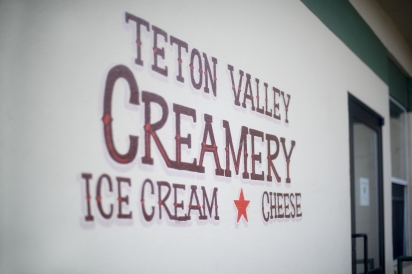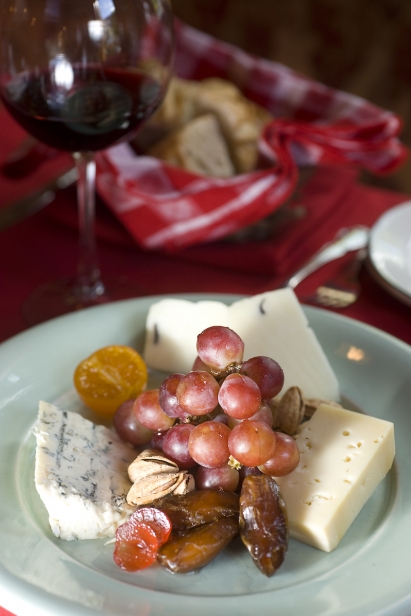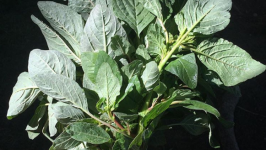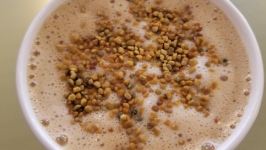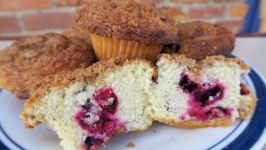Teton Valley Terroir: Exploring the Region’s Cheese-Making Roots
“Terroir” is a French word that has historically been used to describe the climate, soil, and topography that lend unique flavor characteristics to wine. Today this word is increasingly applied to artisan cheese, particularly from pasture-based or grass-fed animals where local foraged foods and minerals contribute delicate flavors.
For a handful of artisan cheese-makers, the high peaks, rugged wilderness and clean rivers of the Teton Valley, combined with local passion for for animal welfare and sustainable food production, truly sets their cheeses apart.
Victor’s first cheese maker was Samuel Kunz, a Swiss immigrant who began producing cheddar cheese for the local market in 1893. In 1919, after Kunz stopped making cheese, the Nelson-Ricks Company of Salt Lake City built a cheese factory in Victor and eventually expanded to nearby Driggs and Tetonia; their last factory closed in the 1970s.
It has been estimated that 33-35 commercial dairies were still operational in the early ’80s; today only five of these original family farms continue to milk, most of which is trucked to Glanbia Foods in Blackfoot, the largest American-style cheese manufacturer in the United States.
Mike Reid, owner of Paradise Springs Farm, had a different vision when he began his raw milk bottling business in 1999 at the base of the Big Hole Mountains. Reid aspires to “producing the highest quality plants and animals possible through biodynamic practices and creating a humane model for the rest of the world” at his 200-acre certified biodynamic organic farm and Grade A dairy.
By 2004, Reid’s cows (mostly Brown Swiss) were producing more milk than he could sell and he found he was able to make good cheese on the stovetop. Reid unearthed an old cooling tank in a barn in nearby St. Anthony, installed it himself with a system of copper tubing that heats a slab underneath, and started experimenting. Like most home cheese-makers, Reid started with Ricki Carroll’s Home Cheese Making Book.With a double major in botany and biology, Reid was also able to grasp the technical chemistry and culturing information outlined in a two-volume textbook called Cheese and Fermented Milk Foods by Frank Y. Kosikowski.
“Every cheese-maker is self taught to some degree because they have to adapt to their own equipment and milk supply,” said Reid. “Between these two books is all the information you need to make cheese; the ‘artisan’ part is the hard part. Sometimes slight adjustments take up to a year to find out the results,” he lamented.
Today Reid produces approximately 50 pounds of cheese a week. Paradise Springs Teton White Cheddar Raw Organic Style is cellar-aged over one year and gets its sharp flavor from a homegrown blend of chamomile, valerian, alfalfa, Austrian sweet pea, and other grasses. His Mahogany Ridge Raw Organic Alps-Style cheese captures the special flavors of spring blooms and is only made once a year when the cows nibble the herbs, wildflowers, and native grasses in a nearby Mountain Mahogany forest.
The most ambitious attempt at reviving the tradition of cheesemaking comes from the Teton Valley Creamery (now closed), a small, state-of-the-art facility that sits in a renovated art-deco gas station, also serving as City Hall in downtown Driggs. The business was born from an intersection of the visions of Lauren Hokin (who owns the operation along with her family) and renowned Illinois Cheese-Maker Fons Smits, Hokin’s “cousin-in-law.”
While on vacation in Driggs, Smits immediately saw the potential for making cheese. “Fons looked around and saw that our area had some of the key variables you need, including a handful of small family run dairies, good pasture, and [it] was an incredibly beautiful place,” said Hokin. When the Teton Valley Creamery began making cheese in 2010 their milk was hauled in 10-gallon cans from the Wright Family Dairy nearby where Holstein cows forage on homegrown alfalfa, barley, and hay. Today their milk is purchased from Reed’s Dairy in Idaho Falls.
Teton Valley Creamery produces three varieties of aged cheese: Sapphire Blue is a semi-soft, tangy, mold-ripened cheese aged for 60 days; Yellowstone is an alpine-style cheese that forms a lovely rind from being washed with beer from the Grand Teton Brewery; Haystack is a creamy, mellow Havarti-style melting cheese that is aged two months in 10 pound wheels. They also make fresh cheese curds and ice cream in a variety of flavors, both of which are especially popular during the summer tourist season. (see author’s note below)
On the other end of the spectrum, Marianne Sturken tends a small herd of Saanen and Saanen/Nubian (Snubian) goats on the outskirts of Victor. Her ladies graze on a grass and alfalfa mix in the summer that is harvested for hay for the long winters. In 2007 Sturken attended a two-day “Basics of Cheesemaking Workshop” through the University of Idaho Food Technology Center. She continued to experiment and research, and in 2013 attended a workshop in Montana. With a Small Herd Exemption Permit through the Idaho Department of Agriculture she is able to produce a limited variety of raw milk cheeses for sale in her home kitchen.
Sturken has perfected a mild, fresh, lightly salted chèvre that, because it’s not too “goaty,” sells out quickly at local farmers markets. Herbs, local honey, and nuts are added for variety and she also makes a soft-ripened (Sainte Maure-style) chèvre and delicious goat milk “feta” aged in whey brine. She has experimented with small amounts of goat milk cheddar, and plans to make several varieties of hard cheeses in the future. She also makes decadent scented goat’s milk soaps.
Sturken has to be creative with the changes of season as milk production slows down during the long winters and seasonal consumer fluctuations affect sales. Although she dreams of a larger variety of aged cheese, she believes, “My options for expansion are limited due to my small herd exemption. I want to stay within my means and continue to be as sustainable as possible.”
At the end of the day all these cheese-makers aspire to the same thing—producing the best possible cheese from the highest quality ingredients. Is there a good market for creameries and dairies that give people what they want—food that’s healthy for both humans and animals? Ultimately it’s up to us, the consumers, to tell them “Yes!”
Paradise Springs Raw Milk Cheeses are available at:
Barrels and Bins | @barrelandbinsmarket
Victor Valley Market
Aspens Market in Wilson, WY
NourishMe
Jackson Hole Farmers Market | @jacksonholefm
Idaho’s Bounty | @idahosbounty
Marianne’s Raw Goat Milk Cheeses are available at:
Liquor Market
Victor Valley Market
Teton Valley Farmers Market
Victor Farmers Market
Nelson-Ricks Company
Glanbia Foods
Paradise Springs Farm | @paradise_springs_farm
Home Cheese Making Book
Cheese and Fermented Milk Foods
Reed’s Dairy | @reeds_dairy
Grand Teton Brewery



